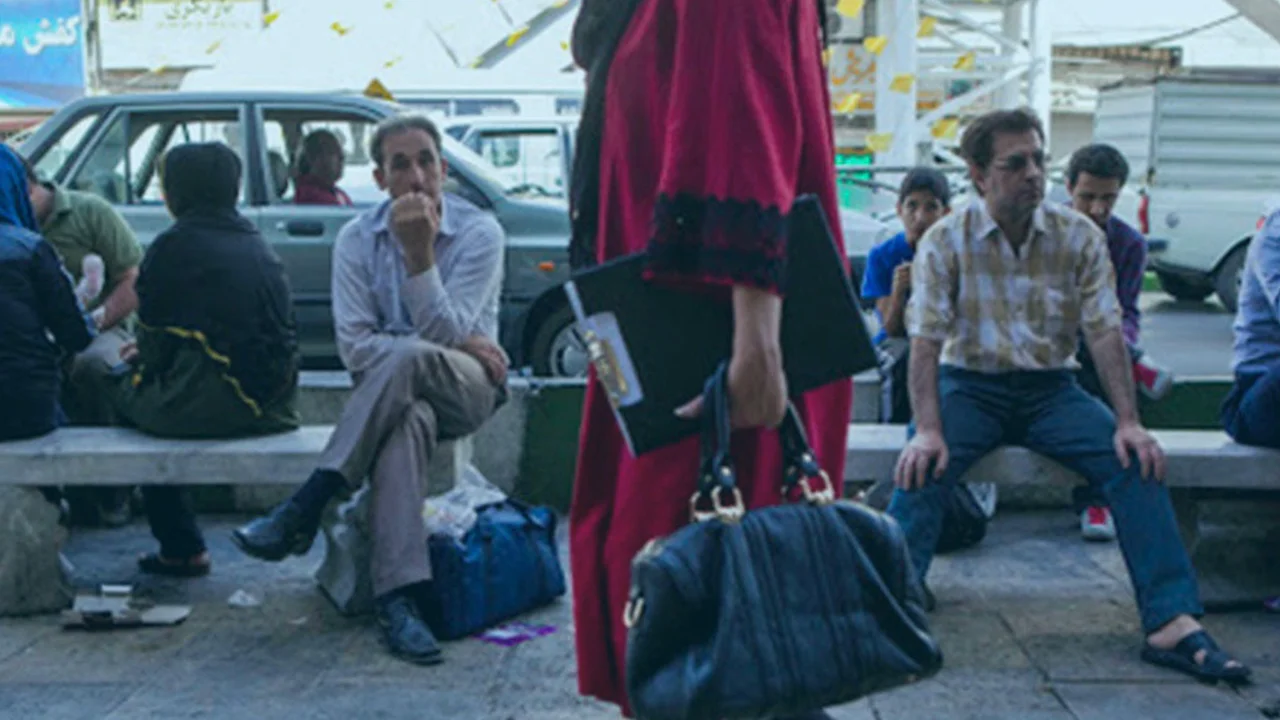Poll: 80% of Iranians Have Been Harassed in Public
Iran Open Data’s poll shows 8 out of 10 respondents experienced catcalling and physical harassment. The highest number of catcalling incidents occurred in commercial, recreational, and administrative locations. The highest number of physical harassment incidents occurred aboard public transport, and at stations and terminals. Male perpetrators catcall 10 times, and physically harass 15 times more than women, the poll suggests.
Catcalling is an expression that mainly men, and sometimes women, use to insult, humiliate, or draw attention to themselves. But physical harassment is something different. In the Persian language, the word "angulak" is defined as “playing with something using fingers.” In modern, colloquial language, this definition has changed to mean disturbing someone, especially by touching another person's body without their consent.
It is rare to find a society that is completely free of catcalling. For example, studies show that 14% of European women reported that they encountered men who whistled at them on the street to get their attention. Among European countries, women in Spain reported the most cases, with 23%. Women in Italy reported the least incidents, with 10%.
Although physical harassment has been greatly reduced in many societies due to legal protections and education campaigns, it is still prevalent in some societies. Egypt is one of the most well-known locations for this type of abuse. A study shows that 98% of foreign women, and 83% of Egyptian women, have been sexually harassed. Harassment is so prevalent that it happened even in protest rallies during the Arab Spring.
No extensive surveys provide accurate figures about harassment in Iran. One private research article shows that a woman experiences physical, verbal, and other types of harassment (i.e. inappropriate looks) between 1 and 20 times each time she is out of the house, and correlates the frequency of the incidents to the amount of time a woman spends in public. A survey by a public institution shows that 76% of women have been verbally harassed and 83% of them deliberately pushed by men. A report on the working environment of journalists indicates that 65% of them have experienced verbal harassment and 3% have experienced physical harassment.
To gather information on the extent and manner of verbal and physical harassment, Iran Open Data has asked Iranians on social media to share their experiences by taking an online poll. This poll was available to users from June 11 to November 2, 2022. During this period, 2,507 responses were received. 64% of the respondents identified female and 36% identified male. 97% of the respondents lived in urban areas and the rest in rural areas. The respondents said they lived in 31 provinces, and as expected, most respondents lived in Tehran. The lowest number of respondents said they were from South Khorasan, North Khorasan, and Kohgiluyeh and Boyer Ahmad provinces. The average age of the respondents was 32. Of the respondents, 43% said they did not have a bachelor's degree. The rest said they had a bachelor's degree or above.
The following report and graphs provide a general overview of the poll’s results.
Being verbally harassed
- Of every 10 poll respondents, 8 stated they have been verbally harassed at least once.
- Responses show women were verbally harassed 3 times more often than men. Three out of 4 women, and 1 out of 4 men, stated that they were verbally harassed.
Locations where verbal harassment occurred
- Most of the harassment was heard on the street. 9 out of 10 stated they have been verbally harassed on public streets.
- Although the verbal harassment happened the least in residential buildings, 1 out of 4 people state they have been verbally harassed there.
- Categorizing where people get verbally harassed, the highest amount of catcalling happens in commercial, recreational, and office buildings, according to poll responses
- Streets, alleys, transportation-related places such as inside vehicles and stations, and residential places, such as hallways, staircases, and elevators are ranked next.
- Women said they were verbally harassed more often in residential places, while men said they experienced it on the streets and alleys.
- Individuals under the age of 20 said they have been the targets of verbal harassment on or near public transportation. Respondents aged over 40 said they experienced the same in commercial, office, and recreational buildings.
Catcalling disaggregated by gender
Men said they catcall 10 times more than women. According to the responses, 80% of catcallers were male, while 8% were female.
- Women were verbally harassed by men, and men by women. But the level of harassment of men by women was higher than expected.
Physical harassment
- Nearly 8 out of 10 respondents stated that they have been physically harassed in public places, meaning others have touched their body without their consent.
- Women said they experienced physical harassment two-and-a-half times more than men. Nearly three-quarters of women said that they have been physically harassed, while about 3 out of 10 men stated the same.
Location where physical harassment occurred
- Most often, respondents said they were physically harassed on public streets; about 70% of the respondents have been physically harassed there.
- Experiences of physical harassment in residential buildings were the lowest.
- The highest number of physical harassment incidents occurred in or around public transportation, such as inside vehicles and stations.
- Commercial, recreational and administrative places, streets and alleys, and residential places such as hallways, staircases, and elevators ranked next.
- Women said they experienced physical harassment the most on the streets, and men in or around public transport.
- Respondents with a college education said they were harassed physically in or around public transport, as well as office, commercial, and recreational buildings.
- People without a college degree were physically harassed more on the streets and in residential areas.
Perpetrators of physical harassment based on gender
- Nearly 90% of the perpetrators were male , while only 5% of them were female.
1
- As expected, women were physically harassed by men and men by women, the poll results show. However, the level of harassment of men by women was higher than expected.
- Respondents with a college education were physically harassed more often by males and respondents without college education by females.



